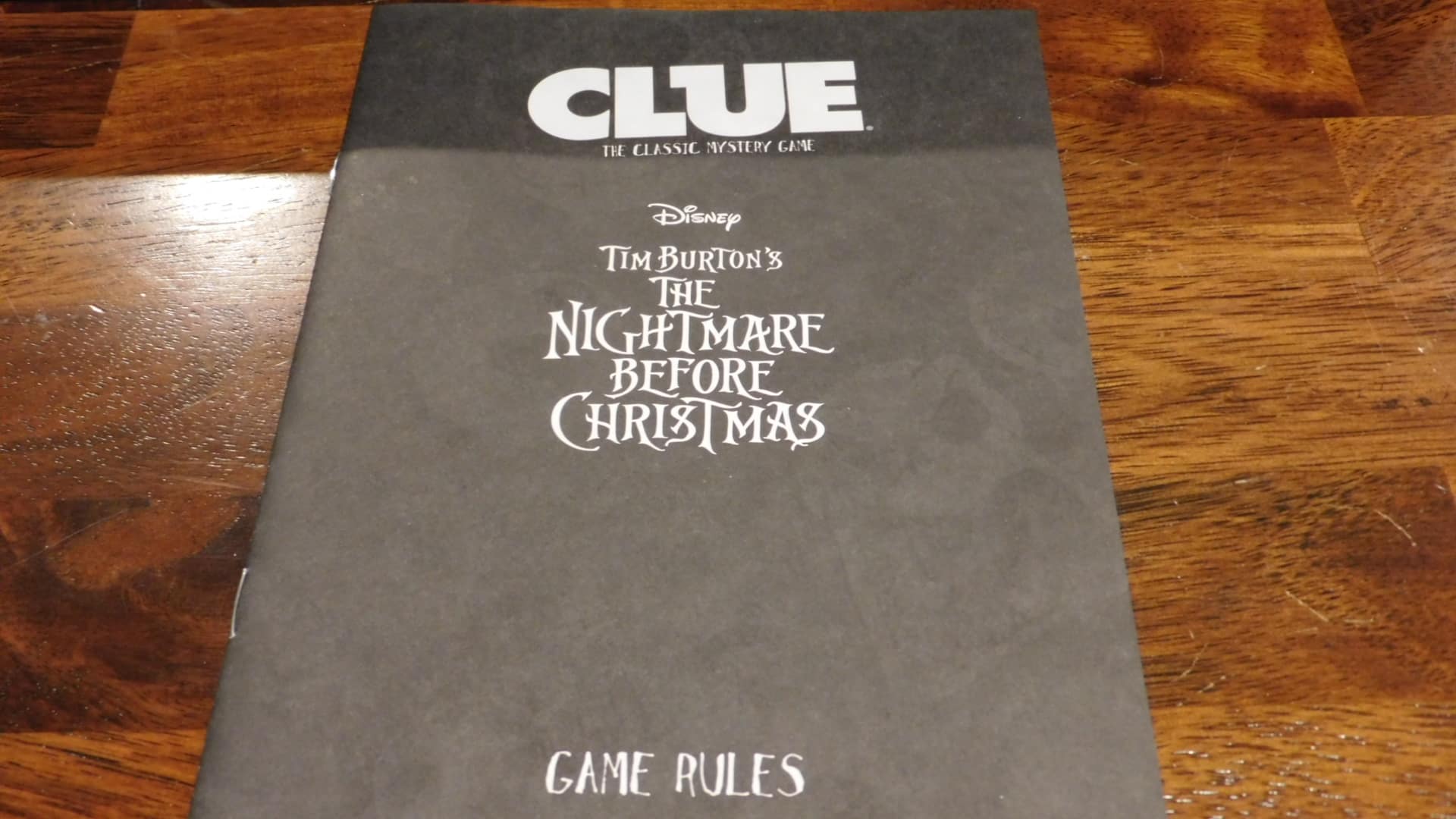Here it is, my how to play of Clue: Tim Burton’s The Nightmare Before Christmas. I hope you enjoy!
Clue: Tim Burton’s The Nightmare Before Christmas plays almost exactly the same way regular Clue does. So, the goal is still to guess a suspect, weapon, and location as related to a murder, and this is still done by moving to rooms and guessing to see if anyone has cards matching your guess or not.
Table of Contents
Looking For Other Versions Of Clue?
Hey, if you’re here, you probably like Clue to some degree. Well, the good news for you, especially if you’re looking for more Clue, is that there are over 100 versions of Clue (with more coming out all the time). I’m partial to the Simpsons Clue 2nd Edition version, but you may find a different one you like!
Back-Of-The-Box Facts About Clue: Tim Burton’s The Nightmare Before Christmas (2022)
- Player Count: 2-6
- Time To Play: 30 minutes to 1 hour
- Age Range: 8 and up
- Difficulty: Beginner/Easy
- Price Range: Under $50
- Release Year: 2022
- Publisher(s): Hasbro
- Designer(s): Unknown
- Artist(s): Unknown (Inspired by the movie)
- Where To Buy: Amazon
How To Play Clue: Tim Burton’s The Nightmare Before Christmas
In short, this version of Clue plays exactly like classic Clue. However, just in case you’d still like the rules listed out here, I’ll go ahead and do so.
We’ll start with the setup.
Setup
To start with, everyone chooses a character.
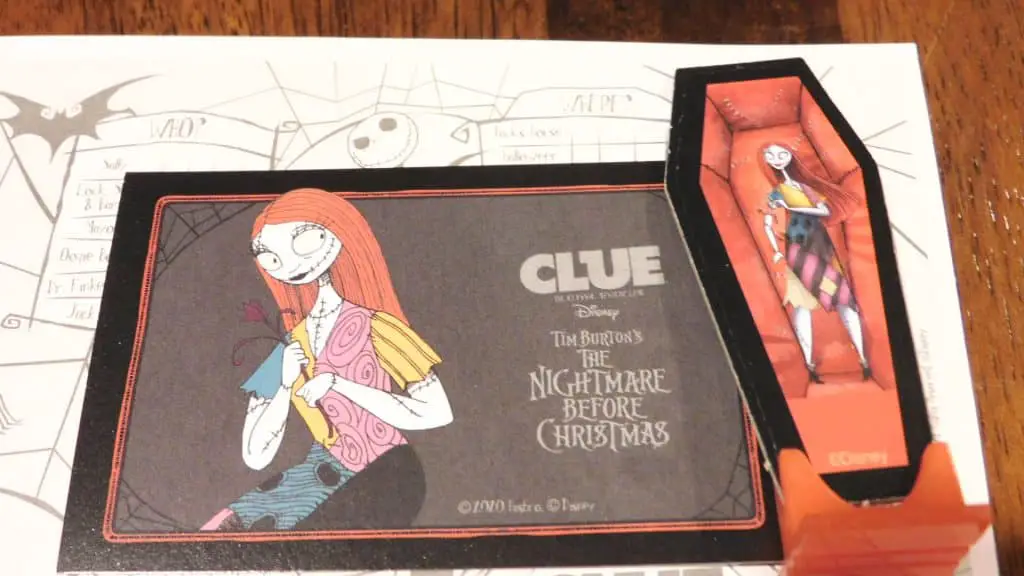
Then, one player separates the rumor cards into suspect, weapon, and location categories.
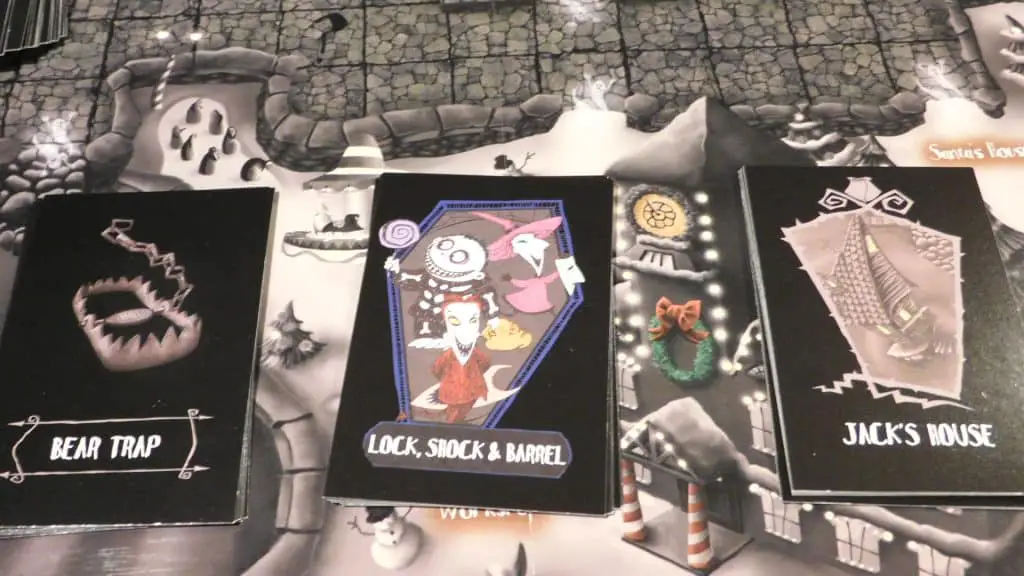
They choose one card from each pile so even they don’t know what they are, then puts them in the case file envelope, setting this off to the side or in the center of the board where all players can see it.
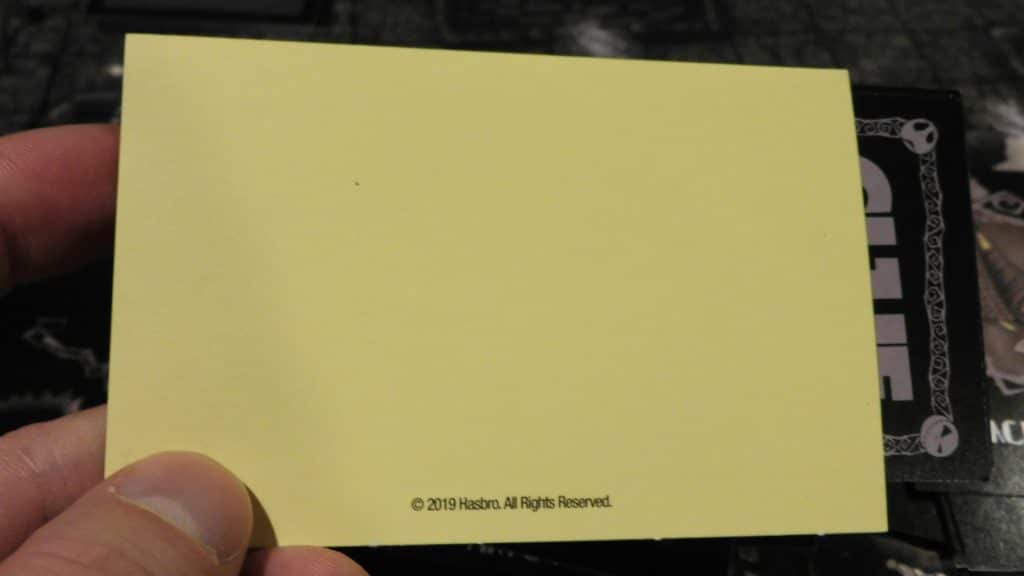
Then that player shuffles the rest of the cards together and deals them out to each player, including themselves. Each player, using the cards they’ve been given, makes notes on their clue sheet as to who is innocent, what weapon wasn’t used, and where it didn’t happen.
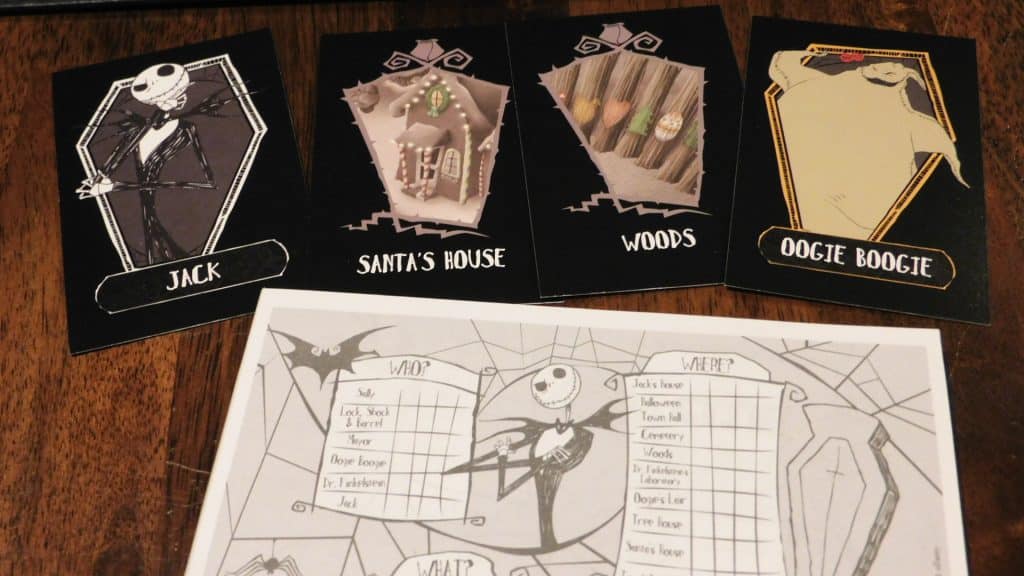
All players and items start in the center of the board. Now, you’re good to go!
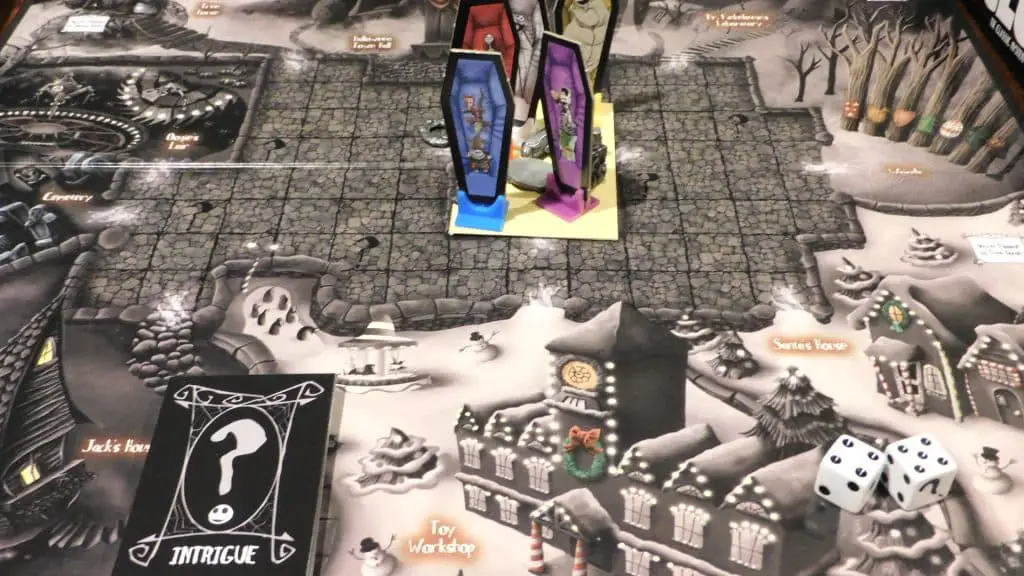
What Players Do On Their Turns
On a player’s turn, they start by rolling two dice. Those dice tell them how far they can move. Also, if they roll a question mark, they draw an intrigue card. Intrigue cards let players do special actions.
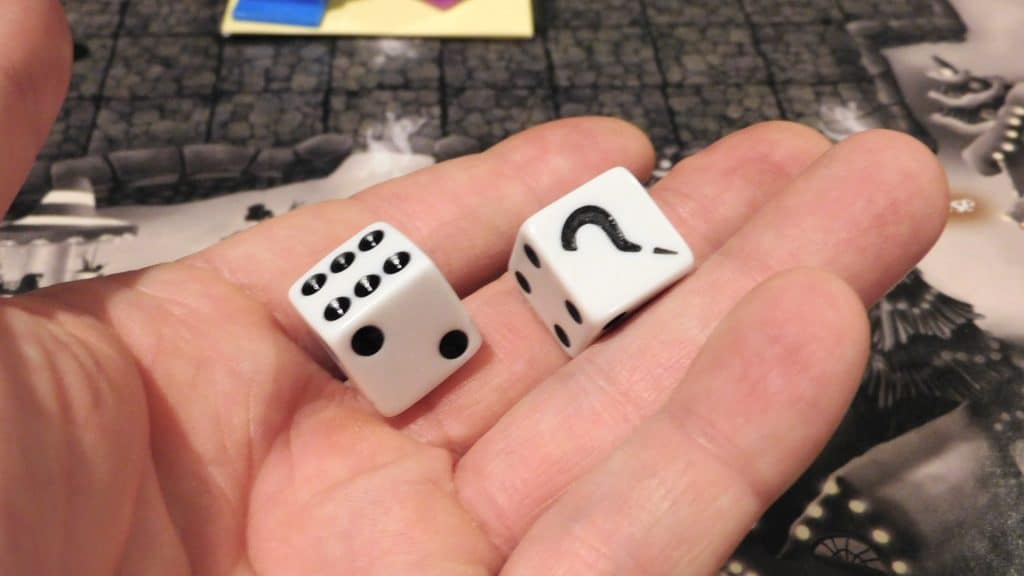
There are some things players have to keep in mind when it comes to movement though, which are:
- They have to leave the room they started their turn in unless they were moved there by someone else using a rumor action on their turn.
- Once a player has left a room, they can’t re-enter that same room on the same turn.
- If a player lands on a question mark space, they draw an intrigue card
- Players can pass through each other’s pieces but not stop on already occupied spaces.
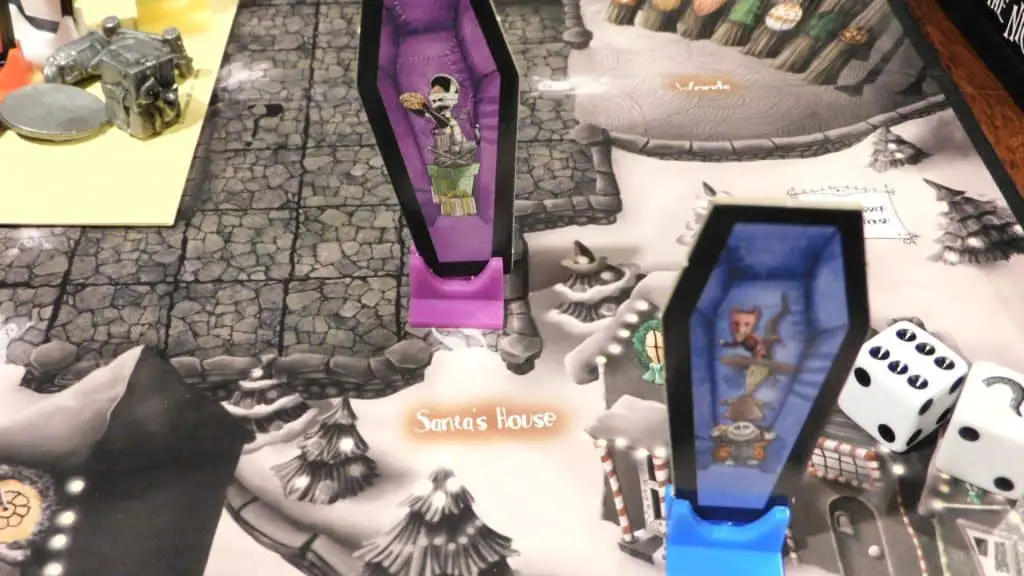
Once a player is done moving, if they’re in a room, they can start a rumor. For this action, they must name a suspect, weapon, and the room they’re in as the three parts of the murder they’re trying to figure out.
The player to their left, if they have one of the cards that match what was named in the rumor, secretly slide it to the player whose turn it is. That player looks at the card, marks it off on their clue sheet, then it’s the next player’s turn.
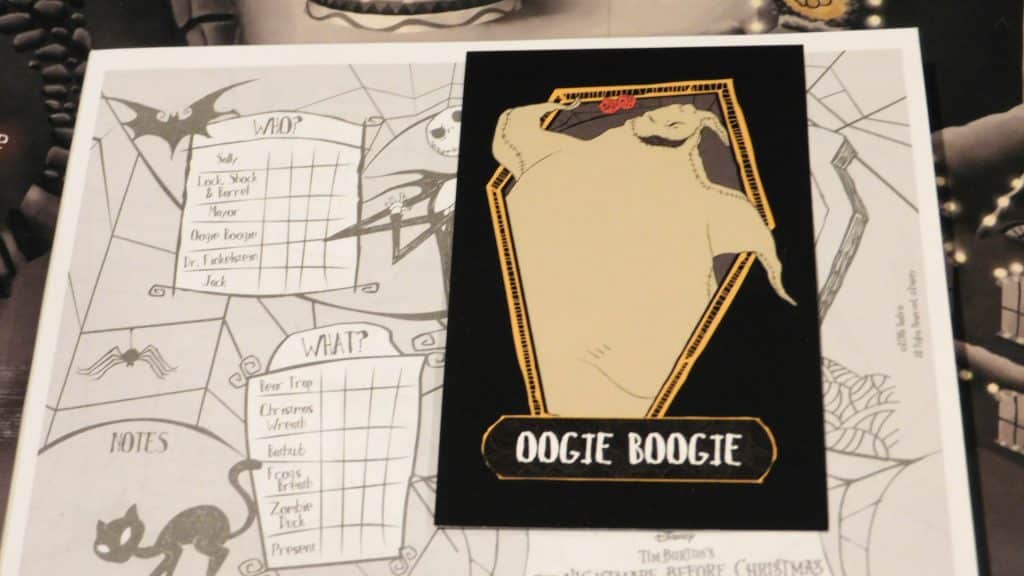
However, if that player to the left doesn’t have one of those cards, then it’s up to the player to their left, and so on until all players have had a chance to see if they have matching cards to show the player whose turn it is. If no one has a card that matches your rumor, your turn is over.
On your following turns, your goal is to make it to the center of the board to make an accusation. This is how a player wins the game.
How Players Win
Once in the center, the player can make an accusation.
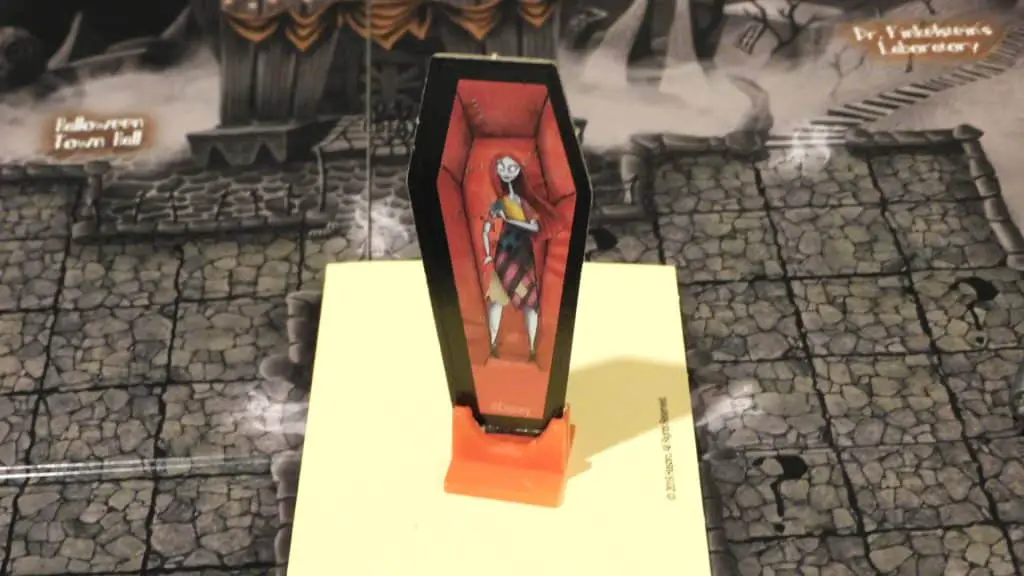
An accusation still names a suspect, location, and weapon. You look at the three cards tucked into the envelope at the beginning of the game.
If you were right, you win! If you weren’t, you lose and are out of the game.
Did You Know?
(Each time you refresh the page you will get a new “Did You Know” fact!)
In the United Kingdom, Clue goes by another name: Cluedo. Also, Mr. Boddy goes by another name too: Samuel Black. The more you know!
Conclusion: How To Play Clue: Tim Burton’s The Nightmare Before Christmas
So, there you have it, how to play Clue: Tim Burton’s The Nightmare Before Christmas. Let me know what you think in the comments below about the game when you play it. Thanks in advance!
And, as always, keep on gaming, fellow board gamers.

